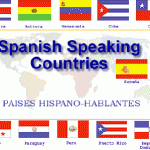Assignments Explained
Homework from Language Files, 11th Edition
All of each:
p. 33, #25a, #25c, #25e
p. 33, #27
At least half of each:
p. 90, #7
p. 90, #8
p. 92, #13
At least half of each:
p. 93, #18a-j
p. 93, #19a-j
p. 95, #24
p. 95, #25
***Phonology***
All of:
p. 136, #6
Half of each of:
p. 137, #15
p. 138, #16
All of:
p. 139, #21
All of:
p. 140, #27 – Standard Italian
If needed for practice:
p. 142, # 31 – Korean
***Morphology***
At least half of each of:
p. 178, #2 – (English)
p. 178, #3 – (English)
p. 178, #4 – (English)
All of:
p. 180, #8 – Bontoc
p. 180, #10 – (English)
All of:
p. 185, #30 – Turkish
p. 187, #34 – Michoacan Aztec
p. 189, #38 – Swahili
***Syntax***
All of:
p. 233, #19 – Syntactic Categories
Half of each of:
p. 234, #20 – Phrase Structure Rules
p. 236, #29 – Phrase Strucutre Trees
All of:
Describe the possible kinds of ambiguity in the following two sentences.
(a) I believe the girl touched the boy with the wand.
(b) I have terrorized cats with ugly faces in my basement.
***Semantics***
Half of each of:
p. 261, #5 – Reference
p. 261, #8 – Word Meaning
p. 263, #19, a-e – Truth Conditions
p. 264, #22 – Truth Conditions
p. 264, #24 – Entailment
All of:
Look at the following text:
It was brillig outside and the slithy toves gyred and gimbled in the wabe. The borogoves were all mimsy-like and you could see the mome raths ongrafing their tugleies. Jon took his vorpal sword in hand. He looked for his manxome foe for a long time, and then he got scared. So, he ran from the river to the Tumtum tree and tried to think without words.
What is the grammatical class of:
(a) brillig
(b) gyred
(c) mimsy-like
(d) scared
What thematic role do the following words have:
(a) the river
(b) in hand
(c) borogoves
(d) words
*****due by 9pm, Oct. 21*****
***Language Variation***
On your own, do all of:
p. 444, #14 – Identify the level of linguistic structure where the variation occurs.
p. 445, #16 – Natural, Some, Non-Native
p. 446, #17 – Vocabulary variation
Then, get with your group and discuss. What was similar across your reponses? What was different? Thinking about R.A.C.E.S. categories (region, age, class, ethnicity, sex/sexuality), do you noticed any patterns?
***Language & Culture***
Make brief notes about:
p. 479, #1, #2, #3
p. 480, #15
p. 482, #28, #29
***Language Change***
Discuss and respond as a group (on the blog) to all of each of:
p. 557, #10, #14
p. 561, #22
p. 562, #29
p. 563, #33
***Language Contact***
Discuss and respond as a group (on the blog) to:
p. 513, #12
p. 516, #22, #23
p. 517, #29
Now that you’ve done all that… go back and summarize your group’s understanding of how Language, culture, Time, & Space all relate to each other. Basically, summarize HW-4. Put your summary at the top and then submit the post.
*****due in class, Nov. 18*****
***Language Acquisition***
p. 345, #2
p. 345, #3
p. 347, #8
–Your response should take the form of:
A. Adult phonological patterns of X are realized by the child as Y, as in Example and Example. This is a kind of [name a phonological process]. Therefore…
Principle 1: [statement]
(repeat for data sets B-D)
E. v. Yes or No, because [provide a reason]
USE TERMINOLOGY YOU KNOW FROM PHONOLOGY AND LANGUAGE ACQUISITION
p. 348, #10
p. 351, #21, #22
***Language Processing***
p. 395-396, #1 i, ii (ignore iii and iv)
p. 397, #4
http://www.linguistics.ucla.edu/people/schuh/lx001/Dichotic/dichotic.html
(i) Did the task work for you — DESCRIBE HOW IT DID WORK OR HOW IT FAILED TO WORK.
(ii) response should be at least 50 words
p. 398, #6
p. 403, #15
p. 404, #19
–devote and entire side of one sheet of paper to this exercise
p. 404, #20 c-g, i-m
–only draw trees if necessary; mention Theta Roles for any examples of structural ambiguity; for each response, answers should have the form:
a. lexical: “player”
i. “player” means “someone who dates many people”
ii. “player” means “someone who plays an instrument”
b. structural: with the umbrella
i. [the umbrella] is instrument, the clown used the umbrella to catch the thief
ii. [the umbrella] is theme, the theif happens to have an umbrella
***ANIMALS***
Think about the rights of non-human animals. Get together with a few friends or family and discuss the following questions:
(1) If an animal is ever shown–conclusively–to master human language, what would this do for the arguments of animal rights?
(2) Would it change the debate if the animal were a mammal (apes, cows, pigs, dogs, cats) vs a bird vs a lizard?
Summarize the discussion. Tell me how the debate went. Was everyone in agreement? How did your knowledge of linguistics, animal communication, and lg. processing come into play?
Describe your different experiences with language. Have you ever learned another language? Was more than one language spoken in your house growing up? Have you ever experienced a time when language was a burden to you?
Use the “blog-1” category tag when you post.
Create a profile for your group that incorporates individual group member attributes and strengths in linguistics and languages (kind of like this Power Rangers profile page, or this TMNT profile page, but shorter and less alien-fighting ninja-y). Pick a “mascot” or Team Name that you feel embodies the spirit of your group. Use as many of the Digital Literacy tools we’ve covered as you can: include images, tags, try some semantic tagging in the code for the post or annotate your text with PoS tags, maybe.
Semantic tags you can use:
http://www.w3schools.com/html/html5_semantic_elements.asp
Create a short vlog about who you are and how you use language. You can do the Accent Challenge, you can do your best impression of how a “True San Diegan” might talk to a “True Texan”, you can make a “Shit ___ say” video. Email me, cc’ing all the group members who will be working with you on this, to explain your idea by Oct. 15.
Work in half-groups. Craft an annotated link-blogging post. Include 12~15 links– at least 5 should be about language or linguistics and at least 1 should be an interesting map. Keep in mind primary audience (your choice), secondary audience (me, other member of SDSU faculty and administration), and teriary audience (your family, your future employers, etc.). As you compose your linkblog, linklog post, consider the linguistic and discursive ramifications of the different styles of linklog, from bare links to thematic to essay-embedded. Several examples from different styles are here:
Mental Floss – Missing Links
–a pretty bare linkblog without much annotation or context–
http://mentalfloss.com/article/58608/missing-links-returning-home
http://mentalfloss.com/article/58569/missing-links-mathematics-alien-invasion
Mental Floss – Morning Cup:
–another mostly bare linkblog, slightly more context–
http://mentalfloss.com/article/58596/morning-cup-links-creepy-string-animals
http://mentalfloss.com/article/58575/morning-cup-links-pizza-cats
Superpunch Link Roundup:
–sparse context that only serves to set-up the link, or is otherwise bare–
http://www.superpunch.net/2014/08/link-roundup_28.html
http://www.superpunch.net/2014/08/link-roundup_6.html
http://www.superpunch.net/2014/08/the-entertainment-earth-summer.html
Boilerplate (my personal blog):
–a kind of hybrid blog, beginning with an essay and ending with links all around a central theme–
http://dsbigham.net/blog/2010-03-20_dork-dork-dork/
http://dsbigham.net/blog/2010-04-23_talk-talk-talk/
http://dsbigham.net/blog/2010-05-18_beauty-beholden-and-beheld/
Chronicle’s Weekend Reading:
–links are embedded in what appears to be a regular essay-style blog post–
http://chronicle.com/blogs/profhacker/weekend-reading-august-everything-after-edition/57917
http://chronicle.com/blogs/profhacker/weekend-reading-poppies-in-london-edition/57667
http://chronicle.com/blogs/profhacker/weekend-reading-umbrellas-in-portugal-edition/57523
Create a masterpost under one of the following umbrella categories: (a) langauge/lingustics/books, (b) surviving college, (c) digtial arts & letters, (d) [a topic of your group’s choice to be approved by Professor Bigham before Nov. 20]. As you did with Linkblogs, consider the different ways of presenting the context of the links in these masterposts, and the different formats of masterposts as a genre.
Examples of Masterposts:
An entire Tumblr devoted to masterposts: http://masterposts.tumblr.com/
Emoji masterpost: http://superkawaiiemoticon.tumblr.com/post/21630699578/emoji-master-post
Hobbies masterpost: http://killyouranxiety.tumblr.com/post/59330764563/hobbies-masterpost
Another Tumblr devoted to masterposts: http://hellyeahmasterpost.tumblr.com/
German language resources masterpost: http://germanbrothers.tumblr.com/post/82210932524/german-language-resources
Japanese language learning masterpost: http://japanese-revision.tumblr.com/post/49716935815/japanese-revision-textbooks-a-dictionary-of
A project of your choosing. Something exploring ideas of linguistics/language and demonstrating your understanding of the skills of digital literacy. I’m intentionally leaving this assignment open-ended to encourage you to think creatively. Start considering your options and ideas in October. You & your group will meet with Professor Bigham to get your final project approved sometime between Nov. 4 – Nov. 20.
Here are some example of projects from my LING 243 course. These are similar in scope to what is expected of your final project, but the LING 101 finals are a bit more constrained in terms of topic and skills I want you to demonstrate.
I’m also providing a selection of large-scale Digital Humanities projects. Your final project for LING 101 will not be as extensive as these larger projects, but they may help get you thinking about how the digital world can intersect with the world of arts & letters.
Class projects for Robert Davis’s Digital Humanities for Theater class at NYU. This is closest to the level of work I expect from you, but is still a bit more advanced than we are.
Two projects that I personally helped design:
Texas English Interactive, part of the Texas English Project at Univ. Texas at Austin
The San Diego Project’s website San Diego Speaks! here at SDSU
The Online Library exhibits of Villanova University
Projects from the DH Press at UNC – Chapel Hill
The Digital Humanities Initiative
Digital Innovation Lab (showcasing a specific toolkit that we aren’t using)




 D5 Creation
D5 Creation